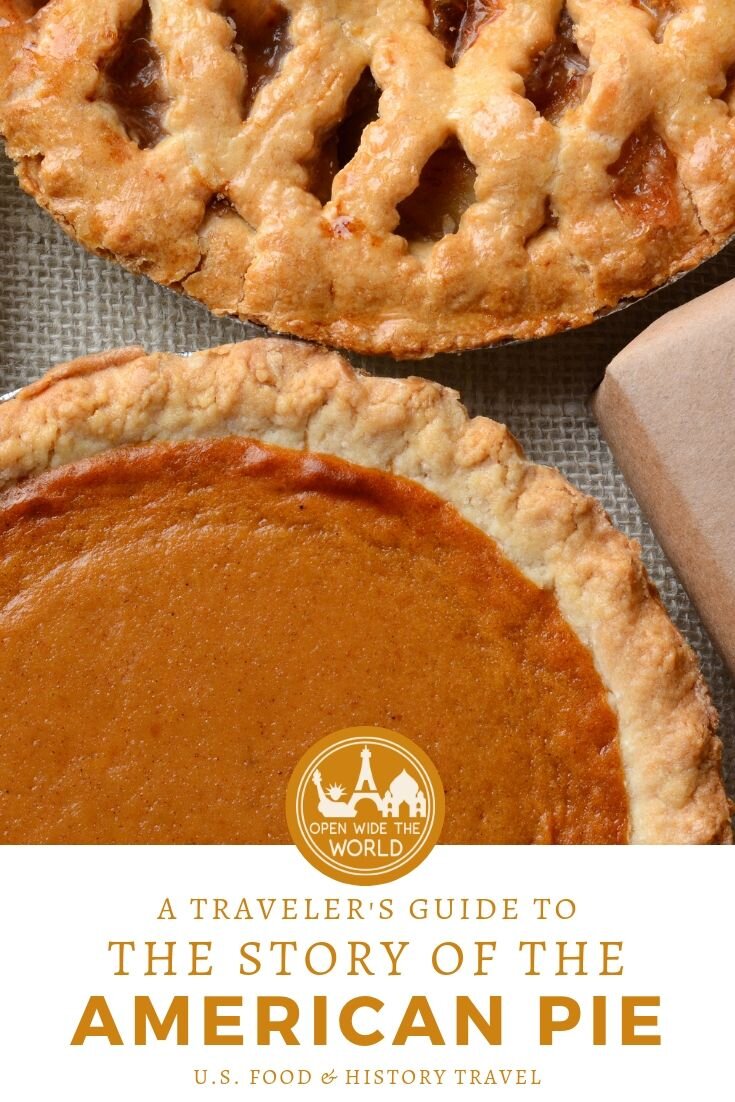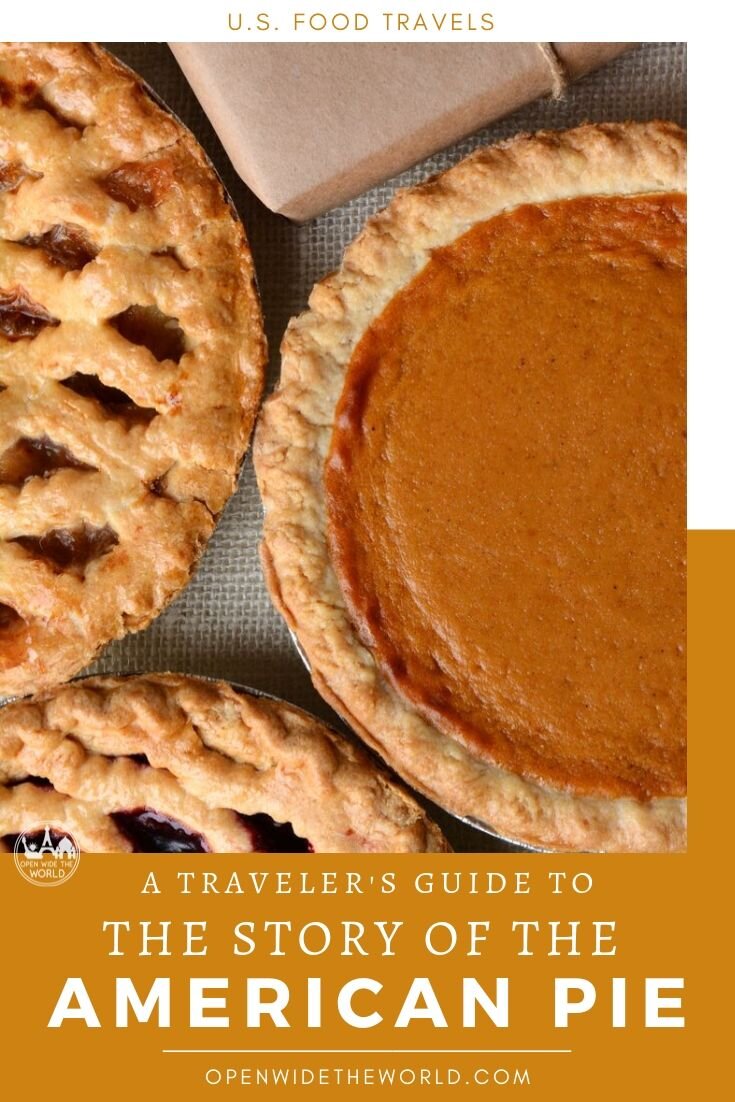The Story of the American Pie
Whether you're a visitor to the U.S. who is interested in the American Pie legacy, or a lifelong local who wants to embrace your delicious heritage, don't eat another slice before you know the story of the American Pie!
The American Pie’s ancestors were Egyptian?
Well, sort of. But maybe more Greek. Or even Pre-Historic.
Neoliths (the people of the New Stone Age) created a basic crust-like food from oats, wheat, rye or barley. They topped it with honey and heated it over hot coals, meaning a crude precursor to the American Pie has existed since about 6000 BC.
Egyptians apparently spiffed up the original recipe by working nuts, honey and fruits into their pastry update, as seen in drawings on tomb walls dating back to 1213 BC.
Greeks who encountered Egyptian pastries made a very practical adaptation. They designed their pastry to encase meat, which served the dual purpose of sealing in the meat’s juices as it cooked, and making the cooked meat more portable.
When Rome conquered Greece (146 BC), they carried off Greece’s recipes for meat pies along with the rest of their spoils.
The extensive network of Roman roads meant that pies were quickly introduced to all of Europe. Locals adapted the recipes to their regional tastes and available ingredients.
Old World Pie Arrives in the New World
The English would tell us that by the 16th century, their “pyes,” which were still primarily meat dishes (think pot pie), had become unrivaled in Europe.
British pilgrims carried their pie recipes and expertise to the new colonies of the future United States.
As all migratory people must, the colonists had to adapt their recipes to the needs and ingredients of the New World.
Needs: As a means to preserve food, colonists baked pies with thick (and sometimes inedible) pie crusts to keep the filling fresh during the winter months. In warmer times, crusts were stretched very thin as a cost-/labor-saving measure.
Ingredients: Colonists began baking pies with the berries, tree fruits and ground/vine fruits that Native Americans identified as edible.
These needs and available ingredients gave rise to an evolution away from the Old World savory pies, and toward the New World sweet pies (although these pies were only as sweet as their fruit; it would be a while before sugar would be added).
We participate in Amazon's affiliate program, which allows sites to earn advertising fees. There is no additional cost to readers making Amazon purchases through our site.
Regionalism, Nationalism and American Pie-ism
As the colonies began to spread further into new regions of the continent, novel ingredients were discovered. Pies, which had already become less British (seen above), became a source of regional pride, showcasing these new ingredients. Likely increasing the appeal of these new ingredients was the fact that they were gathered or harvested, not imported, thus not subject to British taxation.
At the very same time that pies were developing a regional, non-British identity, colonists were identifying themselves less as British, beginning to develop the concept of being an "American" people.
Thus, we see regional pies and and a national pride co-developing in the years leading up to the Revolutionary War. Pie was almost accidentally becoming a part of the newly evolving American identity.
American Pie since the Revolution
Within one generation of the war to establish the United States, the new nation's first-known cookbook, American Cookery, was published in 1798. It included multiple recipes for American fruit pies.
Barely a century later, when an Englishman wrote that apple pie should not be eaten more than twice per week, the editor of the New York times fired back:
(pie is) the secret of our strength as a nation and the foundation of our industrial supremacy... Pie is the American synonym of prosperity. (emphasis added)
"Pie is the American synonym of prosperity." With that rebuttal of 1902, the concept of pie as American was firmly established.
By World War II, with national pride again running high, American soldiers would often tell journalists that they were fighting for “mom and apple pie,” further cementing the emotional tie between pie and country.
Today, American grocery stores sell over $700 million dollars in pies each year. Add to that pies purchased in restaurants and bakeries, plus pies baked at home, and that is a whole lot of American Pie!
SOURCES: Pie It Forward, Bullock-Prado, Gesine, 2012., https://priceonomics.com/how-apple-pie-became-american/, http://time.com/3958057/history-of-pie/, https://whatscookingamerica.net/History/PieHistory.htm



